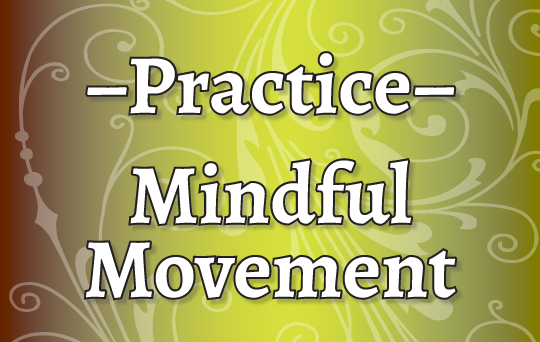
statue of Patanjali by Natalia Rosenfeld (Natalia Sculpture.com)
The Yamas and Niyamas are classical Vedic guidelines for “right living.” They prescribe qualities, practices, or principles that we should all, ideally, cultivate for our own personal benefit but also for the well-being of our communities.
The Yamas and Niyamas were codified by Patanjali circa 400 CE in his Yoga Sutras and comprise two of the eight limbs of a full Yoga practice.
The Yamas
• Ahimsa (non-harm)
This is the “cause no harm” principle—both to the self and to others. This is the basis for many peoples’ choice to practice veganism or vegetarianism, but it applies equally to actively cultivating qualities such as kindness, compassion, honesty, and integrity to the physical, mental/emotional, sexual, and spiritual bodies of ourselves.
• Satya (truthfulness)
Be truthful; avoid lying. This one looks pretty simple at first glace but gets a little complicated when, for instance, you might want to tell the truth but doing so would cause harm. However, telling one lie quickly spins into an entire ensnaring web of lies that are needed to uphold the illusion created by the first lie. A middle way is called for: speaking the truth by framing it in a constructive and useful manner and delivering the truth without an emotional charge.
• Asteya (not stealing)
Avoid stealing—or even “borrowing”—physical objects, intellectual property, etc. Doing so creates a false front that is dishonest to yourself and to others and creates the mental foundations for stress, anxiety, and worry, at the very least.
• Brahmacharya (restraint)
This Yama refers to the taking in of food and drink and how one’s physical practices are conducted. In reality, practicing Brahmacharya means being mindful about eating and drinking only as much food as you are actually hungry for (ie: avoiding over-eating) as well as only extending yourself physically as much as you are able to. This Yama includes expenditure of sexual energy because it’s so closely tied to the expenditure of any type of physical activity or exercise. The idea is to avoid depleting yourself or using up too many reserves.
• Aparigraha (non-coveting, non-desirous)
Avoid being covetous of what you do not have. The act of coveting is, in the end, only a source of conflict and strife that by its very nature strains one’s ability to practice the other four yamas. Desire has the potential to bring with it harm, lying, stealing, and rash actions. It is a very destructive pattern to have running rampant in one’s mind. Practice gratitude and be content with what you have (ie: good health, supportive relationships, a warm and dry home, clothing, nutritious food). Allow these things to be enough, and you will be rich indeed.
The Niyamas
• Saucha (cleanliness)
The idea of “cleanliness” refers, obviously, to keeping a clean body, but along with regular bathing of the physical body, it also encompasses eating foods that are “clean” (ie: nutritious, wholesome, and natural), maintaining adequate hydration (drinking half your body weight in ounces of water, daily), keeping a clean home and workplace, and keeping the mental landscape free of dust bunnies (ie: worry, anger, stubbornness). Allowing the body to expel wastes as they are ready is also important; this includes sweating, urinating, defecating, coughing, and sneezing.
• Santosha (contentment)
Santosha and Aparigraha have much in common. Perhaps they are opposite sides of the same coin. When we are content, we have no need or desire for anything else. When we are covetous, we are anything but content. To be in a state of contentment implies equanimity, balance, peace, happiness, joy, and calm. Those qualities are worth cultivating!
Concerning oneself with things that are yet to come or happen is a form of worry and over-thinking. Dwelling in things of the past is a form of depression. The practice of “being in the moment,” of noticing the quality of your breath, and of connecting to how you feel in your physical body is a an accessible way to practice Santosha.
• Tapas (heat, austerity)
Tapas is the idea of a fire or desire that drives us and motivates us to do our work in the world, to develop ourselves, and to help and support others. Concurrently, we may, at times, have to self-impose limits so that we aren’t over-extending ourselves or to ensure that we are spending our time and resources wisely and most effectively. This is where practicing Brahmacharya comes into play and is useful. The focused beam of a laser is a very powerful thing; think of what you, too, are capable of once you develop yourself!
• Svadhyaya (personal study)
The direction of all life is one of appropriate and individual growth and development. And, for all of us, a time comes when it is time for growth and development to stop and give way to death. While we are alive and capable, though, we best serve ourselves and our communities by learning what our strengths are, what we can develop, and what we can contribute to society. Svadhyaya is the effort spent in learning and self-development that will nurture the self but will also, in the end, be of benefit to us all.
• Ishvara Pranidhara (commitment to the divine)
This practice is a loaded one, particularly in the West. Ishvara Pranidhara is sometimes referred to as “surrender to God.” Some people are ok with that concept; others rebel at it. Let’s simplify.
Ishvara Pranidhara asks us all to acknowledge (“commitment”) and accept (“surrender”) that there is a larger energetic at play beyond human beings and that we are able to draw support from this larger energetic, if we choose to receive it. This can look as formal and dogmatic as structured religion; it can be a very personalized spiritual practice; and it can simply be an acknowledgement of how inter-related we all are.
For instance, it takes a considerable amount of effort and coordination on the part of many people to bring food into your home: the farmer, the distributor, the stockist at the supermarket, and you. We are none of us isolated, and we all contribute to the whole, in some way. Our actions can be far-reaching without us ever knowing it. So, too, the actions of others reach us in unexpected ways.
Allowing a connection to the divine means, at its heart, consciously joining in to the larger whole and doing the best that you are able to in order to benefit others along with accepting the gifts of grace when they show up for you.
Putting it All in Perspective
Now that you know what the Yamas and Niyamas are, you have a choice: to practice some (or all) of them, or not! This is probably daunting. Who, after all, doesn’t at some level want to be recognized as “good”? But it’s darn hard to be “good,” at least all the time.
So here is my offer of a compromise with you. Go easy on yourself! Strive to be all of the “good” things such as mindful and kind and compassionate eighty percent of the time. Allow yourself twenty percent room for error, tiredness, crankiness, distraction, and random life events.
Also, begin with baby steps. Take is slow. Begin with one yama or niyama (your choice!), work on it, and then add in another one as you have time and mental space to do so. Most of all, enjoy the process of self-discovery that is before you.






